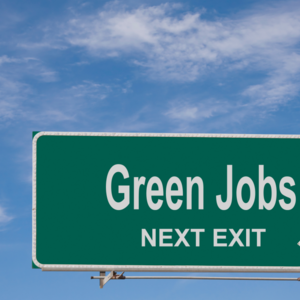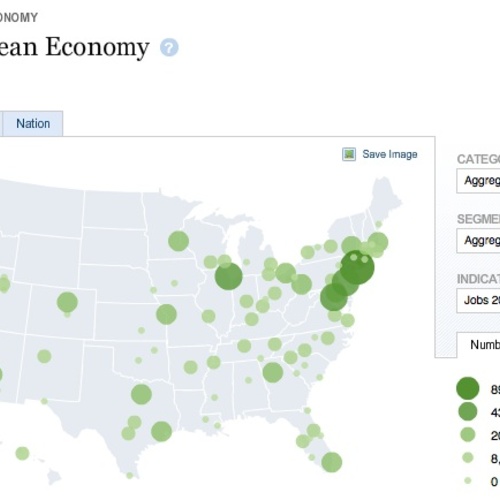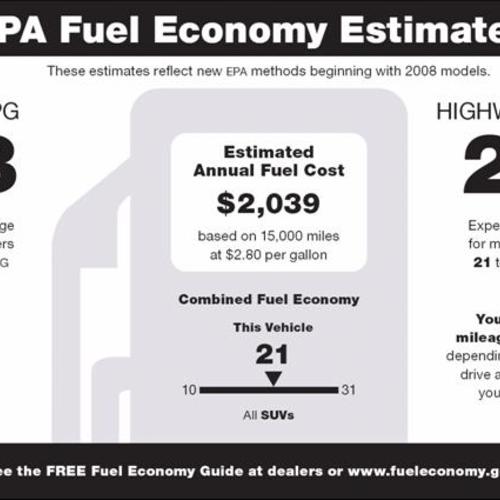
While President Donald Trump may be “the world’s most powerful climate change denier,” our latest research suggests that he took over over a thriving green economy. According to new data, by 2016 it was generating more than $1.3 trillion in annual revenue and employed approximately 9.5 million people–making it the largest green market in the world. It’s been growing rapidly too– between 2013 and 2016, both the industry’s value and employment figures grew by 20%.
For some time, economic data on the green economy in many countries has been lacking. In the U.S., the Bureau of Labor Statistics stopped measuring jobs in the green economy in March 2013 due to budget cuts. This meant that politicians were not able to make informed decisions about the relative merits of supporting green industry or backing fossil fuels—as Trump had pledged to do on his 2016 campaign trail.
To fill this knowledge gap, we analyzed massive databases to record the latest available business transactions from every country in the world. We estimated sales revenue and employment figures across 24 economic sub-sectors covering renewable energy, environmental protection, and low carbon goods and services—collectively termed the green economy. We used this same standardized method across all countries, allowing us to make meaningful comparisons between them.
Our study estimates that revenue in the global green economy was $7.87 trillion in 2016. At $1.3 trillion, the U.S. made up 16.5% of the global market—the largest in the world.
Our analysis also suggests that in the U.S., nearly 10 times more people were employed in the green economy and its supply chains (9.5 million) than employed directly in the fossil fuel industry (roughly 1 million)—that is, miners, electricity grid workers, infrastructure manufacturers, and construction workers. This wide gap comes despite the U.S. fossil fuel industry receiving huge subsidies, estimated at $649 billion in 2015 alone.
America first?
Importantly, the green economy has been growing faster than Trump’s wildest dreams for the fossil fuel industry. As a presidential candidate in 2016, Trump set out his “America first” energy policy, promising to add 400,000 new jobs to the fossil fuel industry. During the campaign, he suggested that he could increase the industry’s economic output by $700 billion over 30 years.
Our data indicates that the green economy grew by over $60 billion per year between 2013 and 2016. This dwarfs Trump’s best hopes for growth in the fossil fuel industry, which equate to an annual increase in value of $23 billion.
Employment in the U.S. green economy also grew by the equivalent of 1.5 million full-time jobs during this time, whereas coal mining jobs declined by 37,000 over the same period.
A precarious position
These are strong numbers. But after three years of faltering support, the U.S.’s position as a world leader in the green economy is precarious.
Up to now, Trump’s campaign rhetoric has not been backed up by major policy changes, although his rollback of a number of Obama era regulations has likely helped the fossil fuel industry in the short term. But unlike Trump, competing superpowers are strongly backing renewables.
China, for example, has emerged as a global climate leader in the wake of Trump’s determination to pull out of the Paris Agreement. In 2017, it announced plans to invest the equivalent of $361 billion in clean energy by 2020 to generate 13 million jobs. This investment alone could go a long way to closing the gap between the value of the U.S. green economy and that of China’s, the second largest in the world. Other countries are also poised to overtake the U.S. in the race to shape the global green economy.
The Green New Deal—popularised by Congresswoman Alexandria Ocasio-Cortez and others—is an ambitious policy agenda that could reestablish the U.S.’s commitment to the green economy. It proposes massive investment in renewable energy and an environment-friendly public works program of gargantuan scale. Phasing out direct fossil fuel subsidies could free up some of the funding required for such investment.
It’s not for us to say whether the Green New Deal is right for the U.S. But what our data does say loud and clear is this: if you want a strong economy that supports thousands of new jobs, then supporting its green quarters is essential. And of course, it will help our imperiled living planet too.
Lucien Georgeson, is a researcher in Green Economy and Sustainable Development, at University College London. Mark Maslin is professor of Earth System Science at UCL. This article is republished from The Conversation under a Creative Commons license.
Weekly Newsletter
Get building science and energy efficiency advice, plus special offers, in your inbox.














6 Comments
In our consumption based economy, energy conservation has always been given short shift. When the residential superinsulation discussion started in the late 1970's and early 80's some of us thought this would become the standard. 40 years later we are still building new homes poorly from an energy efficiency standpoint. Using less fossil energy is the right thing to do, hard to see a downside to the green economy.
Amen.
It took the energy crisis of the 70's and early 80's to "scare" people into building more efficient due to the high price of fossil fuel. Once prices stabilized in the late 80's. Things started to turn towards wasting fossil fuels.
Most contractors/builders don't care about energy efficient homes. They only care about bottom dollar profit and so that is what drives them. They were and are "forced" into building to a minimum energy code and 90% of builders will build to the absolute minimum allowed by law. They will add $$ to fancy countertops and tile but insulation/energy efficiency and building with proper details is the last on their list.
The few builders that will go above and beyond should be recognized and applauded for their efforts. Don't count on energy codes changing anytime soon. The passing of codes in the USA is all politicized and is heavily controlled by builders themselves. It's basically the fox watching the hen house.
Bingo Peter. You're spot on. I see it every day in Bend, OR.
If I wanted to read another anti-Trump article I could go to CNN.
Were there any facts or data listed that you think are false? Or do you just not like any writing that is critical of the president?
Log in or create an account to post a comment.
Sign up Log in